Beth Tabler's Blog, page 213
November 3, 2021
The Juice is Worth The Squeeze – A Review of Six Months, Three Days by Charlie Jane Anders
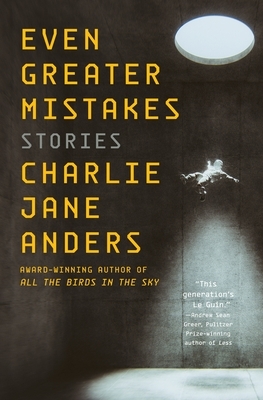 check it out here
check it out here BOOK REVIEW
six months, three days found in Even Greater mistakes by charlie jane anders November 3, 2021 9:00 am 3 Comments Facebook Twitter WordPress Short Story List As Good As NewRat Catcher’s YellowIf You Take my MeaningThe Time Travel ClubSix Months, Three DaysLove Might Be Too Strong a WordFairy Werewolf vs. Vampire ZombieGhost ChampagneMy Breath is a RudderPower CoupleRock Manning Goes For BrokeBecause Change Was The Ocean and We Lived by Her MercyCaptain Roger in HeavenCloverThis is Why We Can’t Have Nasty ThingsA Temporary Embarrassment in SpacetimeThe Bookstore At The End of AmericaThe Visitmothers Six Months, Three Days WHAT IT IS ABOUT?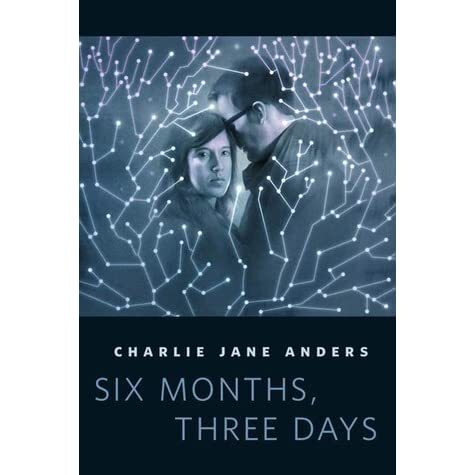
Doug and Judy have both had a secret power all their life. Judy can see every possible future, branching out from each moment like infinite trees. Doug can also see the future, but for him, it’s a single, locked-in, inexorable sequence of foreordained events. They can’t both be right, but over and over again, they are.
Obviously these are the last two people in the world who should date. So, naturally, they do
REVIEWCharlie Jane Anders is a writer that I discovered last year and immediately fell in love with. I enjoyed The City in the Middle of the Night, and I had to investigate all the other things she has written as a matter of course. I am so glad I did. Anders is a Hugo and Nebula award-winning writer and a Hugo nominated fancaster with her partner Annalee Newitz. You can find her excellent podcast here. I bought a hardback copy of her short stories after checking out and reviewing As Good As New. Now, she has a new book of short stories coming out called Even Greater Mistakes.
As Good As New exudes pure positivity even in the face of tragic or exhausting circumstances. It is a quality that I find quite a bit in Anders’s writing. She has a way of finding the good, the beautiful, the heartfelt in places where finding those things is hard. Even in the direst of circumstances, there is always good and always something beautiful even if you can’t see it, and Anders calls it out; she shows us.
“Well,” Judy says. “There are a million tracks, you know. It’s like raindrops falling into a cistern, they’re separate until they hit the surface, and then they become the past: all undifferentiated. But there are an awful lot of futures where you and I date for about six months.”―
There are many wonderful short stories in Even Greater Mistakes. Six Months and Five days is short story with the same sense sense of optimism that I have come to associate with Anders.
Six Months and Three Days is a love story, of a sort. It is an exploration of what happens when two individuals, one who can see his future, and another who can see all futures meet and fall in love? It is a literal definition of a rock and a hard place.
The story is charming, and we know right from the beginning how it is going to end. But, the ending is not important. It doesn’t matter how Doug and Judy end up getting there; it is the six months and three days of life that happen before the final moment, which I think Anders wanted to highlight.
Yes, we can know all the answers. Yes, we know there will be lots of pain in this relationship. Yes, we know exactly how it is going to end. However, there are many beautiful moments, moments of love, and life that are worth celebrating even if you have already seen them in your mind’s eye; you haven’t experienced them.
The juice is worth the squeeze!
Check out the full story collection, but read Six Months and Three Days for sure.
Check Out some of our other reviewsReview – The Final Girl Support Group by Grady Hendrix
55 Books With LGBTQIAP+ Representation to Add to Your TBR
Beth Tabler

Elizabeth Tabler runs Beforewegoblog and is constantly immersed in fantasy stories. She was at one time an architect but divides her time now between her family in Portland, Oregon, and as many book worlds as she can get her hands on. She is also a huge fan of Self Published fantasy and is on Team Qwillery as a judge for SPFBO5. You will find her with a coffee in one hand and her iPad in the other. Find her on: Goodreads / Instagram / Pinterest / Twitter
If You Liked This - Please Share the LoveNovember 2, 2021
First Chapter, First Paragraph – The Eye of the World by Robert Jordan – First Book of the Wheel of Time
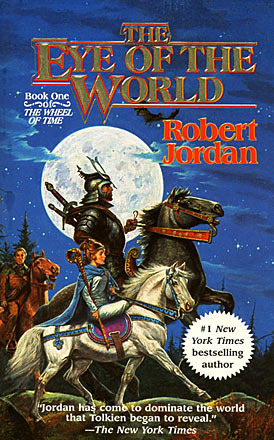
The Wheel of Time turns and Ages come and pass. What was, what will be, and what is, may yet fall under the Shadow.
Let the Dragon ride again on the winds of time.
The Wheel of Time turns and Ages come and go, leaving memories that become legend. Legend fades to myth, and even myth is long forgotten when the Age that gave it birth returns again. In the Third Age, an Age of Prophecy, the World and Time themselves hang in the balance. What was, what will be, and what is, may yet fall under the Shadow.
When The Two Rivers is attacked by Trollocs-a savage tribe of half-men, half-beasts- five villagers flee that night into a world they barely imagined, with new dangers waiting in the shadows and in the light.
Check Out Our Other First Chapter, First Paragraph
The Wheel of Time turns, and Ages come and pass, leaving memories that become legend. Legend fades to myth, and even myth is long forgotten when the Age that gave it birth comes again. In one Age, called the Third Age by some, an Age yet to come, an Age long past, a wind rose in the Mountains of Mist. The wind was not the beginning. There are neither beginnings nor endings to the turning of the Wheel of Time. But it was a beginning.
Born below the ever cloud-capped peaks that gave the mountains their name, the wind blew east, out across the Sand Hills, once the shore of a great ocean, before the Breaking of the World. Down it flailed into the Two Rivers, into the tangled forest called the Westwood, and beat at two men walking with a cart and horse down the rock-strewn track called the Quarry Road. For all that spring should have come a good month since, the wind carried an icy chill as if it would rather bear snow.
Gusts plastered Rand al’Thor’s cloak to his back, whipped the earth-colored wool around his legs, then streamed it out behind him. He wished his coat were heavier, or that he had worn an extra shirt. Half the time when he tried to tug the cloak back around him it caught on the quiver swinging at his hip. Trying to hold the cloak one-handed did not do much good anyway; he had his bow in the other, an arrow nocked and ready to draw.
As a particularly strong blast tugged the cloak out of his hand, he glanced at his father over the back of the shaggy brown mare. He felt a little foolish about wanting to reassure himself that Tam was still there, but it was that kind of day. The wind howled when it rose, but aside from that, quiet lay heavy on the land. The soft creak of the axle sounded loud by comparison. No birds sang in the forest, no squirrels chittered from a branch. Not that he expected them, really; not this spring.
Only trees that kept leaf or needle through the winter had any green about them. Snarls of last year’s bramble spread brown webs over stone outcrops under the trees. Nettles numbered most among the few weeds; the rest were the sorts with sharp burrs or thorns, or stinkweed, which left a rank smell on the unwary boot that crushed it. Scattered white patches of snow still dotted the ground where tight clumps of trees kept deep shade. Where sunlight did reach, it held neither strength nor warmth. The pale sun sat above the trees to the east, but its light was crisply dark, as if mixed with shadow. It was an awkward morning, made for unpleasant thoughts.
First Chapter, First Paragraph – The White-Throated Transmigrant by E. Lily Yu
First Chapter, First Paragraph – Three Parts Dead by Max Gladstone
Humour and Positivity in As Good As New by Charlie Jane Anders
 check it out here
check it out here BOOK REVIEW
AS GOOD AS NEW found in Even Greater mistakes by charlie jane anders November 2, 2021 9:00 am No Comments Facebook Twitter WordPress Short Story List As Good As NewRat Catcher’s YellowIf You Take my MeaningThe Time Travel ClubSix Months, Three DaysLove Might Be Too Strong a WordFairy Werewolf vs. Vampire ZombieGhost ChampagneMy Breath is a RudderPower CoupleRock Manning Goes For BrokeBecause Change Was The Ocean and We Lived by Her MercyCaptain Roger in HeavenCloverThis is Why We Can’t Have Nasty ThingsA Temporary Embarrassment in SpacetimeThe Bookstore At The End of AmericaThe Visitmothers There is Always Hope“Everything out there was white, like snow or paper, except powdery and brittle, ashen. She had a Geiger counter from the panic room, which read zero. She couldn’t figure out what the hell had happened to the world, for a long time, until it hit her—this was fungus.”
 About From the author of the Hugo-winning “Six Months, Three Days,” a new wrinkle on the old story of three wishes, set after the end of the world. My Thoughts
About From the author of the Hugo-winning “Six Months, Three Days,” a new wrinkle on the old story of three wishes, set after the end of the world. My Thoughts I am new to the church of Charlie Jane Anders, but consider me a convert. Earlier this year, I had the fortune of reviewing an advanced reader copy of The City in the Middle of the Night gifted to me by the author herself after seeing me lament my lack of access to the advanced reader copy for review. She was kind enough to send over a copy via her publisher for me to review it. It was an atmospheric and almost ethereal story about darkness and light and the weight of history and tradition. Charlie writes as if words are the only substance that gives her life, and she wants to share that life with you. And this is why I was delighted to find a short written for Tor.com by her about the apocalypse.
Most of the time, when you read books that are about an apocalyptic event, they are dour, wrung in mire, and misery. Death and destruction are not usually topics for polite conversation and joy. However, As Good as New had something that not many stories of the same ilk have that I found outstanding. It has a vein, a kernel of hope shot through it. Hope is what gets people through the tough. Hope for what is better, or right, or honest. It is hope for more. This story was an apocalypse, but it had hope and a bit of joy and humor. Because that is what life often is shitty. But your ability to laugh and find some pleasure in simple things can get someone through it — pleasure, in say, the entire run of The Facts of Life or West Wing.
Marisol is a woman with a lot of time on her hands. She is currently residing in a luxury bunker with a terabyte of television and movies, tons of frozen dinners, and no company. Somehow, this is not explained, Marisol ended up taking shelter in this luxury bunker when all the rest of the world went to pot. She has a whole lot of time on her hands, and she develops an “intense relationship with the people on The Facts of Life, to the point where Tootie and Mrs. Garrett became her imaginary best friends, and she shared every last thought with them.” It had been a couple of months since the last quake had shaken her in the panic room. She felt that maybe it was safe to adventure outside and see what there is to see. What she finds is a world strewn with a white fungus and a bottle.
“The bottle was a deep oaky green, like smoked glass, with a cork in it. And it was about twenty yards away, just sitting in one of the endless piles of white debris. Somehow, it had avoided being consumed or rusted or broken in the endless waves of fungal devastation. It looked as though someone had just put it down a second ago—in fact, Marisol’s first response was to yell, “Hello?” even louder than before.
When there was no answer, she picked up the bottle. In her hands, it felt bumpy, like an embossed label had been worn away, and there didn’t seem to be any liquid inside. She couldn’t see its contents if there were any. She removed the cork.
A whoosh broke the dead silence. A sparkly mist streamed out of the bottle’s narrow mouth—sparkling like the cheap glitter at the Arts and Crafts table at summer camp when Marisol was a little girl, misty like a smoke machine at a cheap nightclub—and it slowly resolved into a shape in front of her. A man, a little taller than she was and much bigger.”
Marisol had found a genie. What does this genie mean for the fate of the world? You know the answer to something like that is never simple.
It is astounding to me that Anders wrote so much about human emotions in only 28 pages. I have IKEA instructions longer than 28 pages. But it works, and it is damn good.
Check it out for yourself. It is at most a thirty minutes read, free at tor.com, and completely worth the time.
Check Out Some of Our Other ReviewsThe Juice is Worth The Squeeze A Review of Six Months, Three Days by Charlie Jane Anders
November 1, 2021
Short Story Review – Rat Catcher’s Yellows by Charlie Jane Anders
 check it out here
check it out here BOOK REVIEW
rat chatcher's yellows found in Even Greater mistakes by charlie jane anders November 1, 2021 10:00 am No Comments Facebook Twitter WordPress What it is about?“A crippling disease has made the body of Grace’s wife a prison for her erratic, reclusive brain. The only hope for their marriage? A video game where she rules over kingdom of cats.”
RAT CATCHER'S YELLOWS
The first thing I thought of when I finished “Rat Catcher’s Yellow” was the Hamlet quote, “There are more things in heaven and earth, Horatio, / Than are dreamt of in your philosophy.”
The premise of the story hits home on two levels. First, Anders gives a perspective from the point of view of a caregiver. The exhaustive and neverending task of caring for someone is fueled entirely by the love you have for them. It is like a gas tank full of memories and small moments shared between two people.
You love them, so you need to manage and protect that person. But your love also ties and binds you to that individual, and you have to watch the candle of their life burn down and die away. Being a caregiver is one of the most painful things that you can do. And in this story’s case, the is dementia. Specifically, an illness that is colloquially known as Rat Catchers Disease or Leptospirosis X.
The story is about two wives. One half of the partnership is Shary, and she has Rat Catcher’s disease and is slowly fading away a little every day, like leaves falling from a tree in autumn. The other is her life partner and caregiver, Grace. Grace gives Shary a toy game in a desperate bid of connection and to ignite the Shary of old. A video game shaped like a Cat called The Divine Right of Cats. It is childish. And Grace wants to throw it out the window, “I Feel like a backstabbing bitch. Giving this childish game to my life partner, it’s like I’m declaring that she’s lost the right to be considered an adult.”
This game is supposed to help those with the disease.
An amazing thing happens. Shary slowly slips away, but her incredible mind falls into the game, and she creates empires. She rules the cat kingdoms. Her mind and ability to strategize makes her one of the best rulers in the world. Furthermore, the cats have been solving problems. “inside the various iterations of Greater Felinia, that economists have struggled with in the real world. Issues of scaricity and resource allocation, questons of how to make markets frictionless.”
This idea of Shary slipping into this game even though her mind is slowly disappearing brings me back to the original quote from Hamlet. There is much more to this world than what we can perceive. But that doesn’t help.
Shary might be building empires, but those empires are built without Grace except as a memory.
In a lot of ways, this is a painful story to read. I have seen the effects of dementia; I have been a caregiver. You want everything, a spark, just one moment with the person you love—something you would do anything to achieve. I have read a lot of Charlie Jane Anders. They all have this heart, this connection buried under science fiction. Because at the end of the day, that is all we have.
Check Out some of our other reviewsReview – The Final Girl Support Group by Grady Hendrix
55 Books With LGBTQIAP+ Representation to Add to Your TBR
Humour and Positivity in As Good As New by Charlie Jane Anders
Beth Tabler
Elizabeth Tabler runs Beforewegoblog and is constantly immersed in fantasy stories. She was at one time an architect but divides her time now between her family in Portland, Oregon, and as many book worlds as she can get her hands on. She is also a huge fan of Self Published fantasy and is on Team Qwillery as a judge for SPFBO5. You will find her with a coffee in one hand and her iPad in the other. Find her on: Goodreads / Instagram / Pinterest / Twitter
Review – Trailer Park Trickster by David R. Slayton
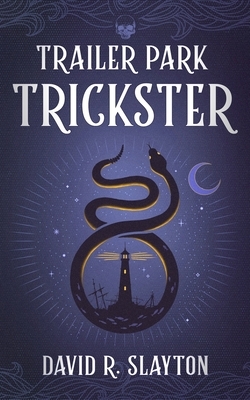 check it out here
check it out here BOOK REVIEW
TRAILER PARK TRICKSTER by DAVID R. SLAYTON November 1, 2021 10:00 am No Comments Facebook Twitter WordPress “Just remember, it’s always darkest right before it goes pitch black.”Let me introduce you to one of my favorite series from last year, the Adam Binder series. Who author David Slaton has released a new book for 2021, Trailer Park Trickster.
In the first novel of the series, White Trash Warlock, we are introduced to the titular character Adam Binder. Adam is a sensitive, one who is aware of the other side of things. The existence of magic, elves, and evils that come from that side of the coin. This sensitivity rules his life, and he tries to work around it, but he is often overwhelmed by the energies and feelings of masses of people.
“Adam Binder hasn’t spoken to his brother in years, not since Bobby had him committed to a psych ward for hearing voices.”
White Trash Warlock by David R. Slayton
His brother has him committed to a facility, mainly in a misguided attempt to help him, but also because the things that adam believes are scary and might be true. This obviously causes a strain on the relationship between the brothers. Something dark and murderous possesses Bobby’s wife, Adam comes to Colorado from rural Oklahoma to see if he can help. Despite the divide between his family and him and the way he is treated.
This dark thing that is infecting people in the city is a power unlike anything Adam has ever seen, and to survive, he must call on energies above his paygrade. Plus, there is a great love triangle and banter with immortals of all sorts. It is an engaging urban fantasy that has some comfortable tropes that you find in urban fantasy, but author David Slayton has a way of making things seem very fresh.
All of this takes us right to the sequel, Trailer Park Trickster. Adam is reunited with his family after much pain and turmoil. All are completely changed from the events in the first book, but none more so than Adam’s brother, Bobby. The story picks up with Adam returning home to Guthrie, Oklahoma. He has suffered a significant loss that has set him adrift.
This brings me to what I think is the central theme of this story, being lost and untethered. Both Adam and Vic have had some great upheavals in their lives. Adam is trying to find what to do after his great loss, and Vic is trying to make sense of his new life and connection to Adam. It doesn’t help that Adam is a terrible communicator, which leaves Vic even more in the dark.
“Just remember, it’s always darkest right before it goes pitch black.”
Also, to make things more confusing for Adam, Trailer Park Trickster’s antagonist is a dark druid whose identity is one of the great mysteries to be solved. The druid is picking off Adam’s family members one by one. Adam does not have many family members, and those he does have he holds dear for the most part. This allowed Slayton to fill in some essential backstory elements that enriched Adam’s history. I loved learning about his world, painful as it is. It rounded out Adam even more for me as a protagonist.
While Adam is dealing with his part of the story and the dark druid, Vic has a challenging time with Argent, the Queen of swords. I like Argent as a character, but this section did feel a bit flat to me. It might be because I enjoy Argent and Vic together as a team, and separated didn’t give me the same bang. Their relationship was a wonderful part of the first book, and I look forward to exploring their complicated story in future books.
The Adam Binder series is fast shaping up to be one of my favorite urban fantasy series. Adam’s story has a lot of heart. You wouldn’t think of him as a leading man-type character you find in famous urban fantasy series. Dresden, as much as I love you, I am looking at you. Adam isn’t snarky, and he doesn’t need to be. He is heartfelt, and I respect and want to learn more about his determination and quiet resilience.
Check Out some of our other reviewsReview – The Final Girl Support Group by Grady Hendrix
Review – White Trash Warlock by David R. Slayton
Beth Tabler
Elizabeth Tabler runs Beforewegoblog and is constantly immersed in fantasy stories. She was at one time an architect but divides her time now between her family in Portland, Oregon, and as many book worlds as she can get her hands on. She is also a huge fan of Self Published fantasy and is on Team Qwillery as a judge for SPFBO5. You will find her with a coffee in one hand and her iPad in the other. Find her on: Goodreads / Instagram / Pinterest / Twitter
October 31, 2021
SPFBO7 – Finalist Selection
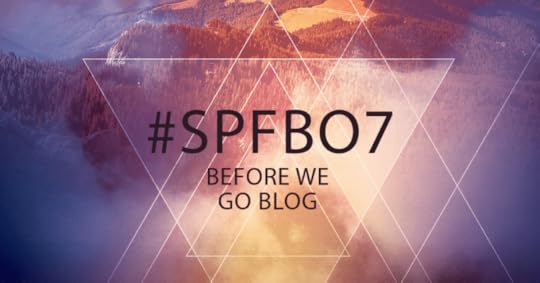
The Before We Go Blog is now down to the final two books from our initial pile of 30: Demons, Ink, and The Forever King. What an exciting trip it has been. As a team we were very fortunate, and also in some ways cursed to have such a good selection of books. There were very few easy choices for us as reviewers. And, we as a team had many discussions weighing out what we saw as the merits for different books. Many of our choices came down to the finest of details that had to sway us one way or another, especially as we neared the end of the first leg of this SPFBO7 journey. While our finalist selection edged out all of the other books in the semi-finals points-wise, this was not a shut-out. Our semi-finalist selections are all excellent books. Books, that had our pool not been so incredibly deep could be going to the final in their own right. And, I know that I can speak for my team when I say that we are better for having read these books.
Now, on to the reviews!
Demons, Ink by clayton snyder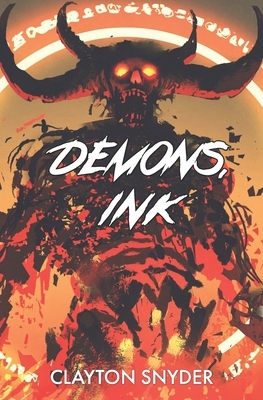 Demons, Ink by clayton snyder Buy A Copy Here What is it about?
Demons, Ink by clayton snyder Buy A Copy Here What is it about? Jack Nyx is down on his luck. Demons bound to his flesh, his ex’s soul in a jar, and on his last dime, he takes the one job he shouldn’t.But a quick buck never comes easy, and Jack is in the deep end of the fecal pool. Desperate, he enlists the help of street witch, Ivy Sosye.In over their heads, trapped between the demons they know and the devil they don’t, the last thing Jack needs is to fall for his best friend.Hunted, cursed, and in love is no way to go through life. Then again, it’s better than dead.
TEAM REVIEWSJodie – In Demons, Ink by Clayton W. Snyder, we’ve got a pretty solid setup. Jack Nyx is a grizzled kind of character, one who has been kicked around by life but is a sweet guy deep down. Okay, really deep down. He will do pretty much any job if it’ll pay well enough. He is asked to find a missing girl, but the job is a lot more complex than it seems at first. Then again, so is Jack. See, Jack has company of the demonic variety. Demons, Ink was an entertaining read, but I also had some quibbles with it.
I really liked Jack’s smart mouth. It felt very reminiscent of one of my favorite movies (Kiss, Kiss, Bang, Bang, which has Robert Downey Jr. but is devoid of demons). Of course, snark like that has a fine line to walk. It can either add to the story immensely, or it can detract from it. Overall, I felt it added. However, every now and again I felt like it was trying a bit too hard.
Another issue I had was the number of things that had already happened and were just kind of thrown in. In general, I like books that have a predeveloped history, but in this case it sort of confused me. I honestly thought Demons, Ink was a sequel and I had missed an entire book.
The way the demons are bound is incredibly cool and the premise is a ton of fun. I can say with confidence that Demons, Ink will appeal to fans of Harry Dresden.
I rate it a 7/10
Becca – For this book – you need a notebook and a backstory that isn’t there. I was confused at times on some of what was going on, and then trying to read between the lines on other parts. I really did like the demons, they were the true redeeming area of this book.
G.M. – Demons, Ink is a hell of a book. You can take that pun as intended or not. We follow down-on-his-luck Private Eye Jack Nyx as he is drawn through a deadly case involving heaven and hell, as well as the demons that have been tattooed into his body. Along with a street-smart witch, they uncover a conspiracy of angels and demons that involve Nyx’s ex-lover and former mentor that has implications for existence as we know it.
The book reads like a well-written, breakneck mash-up of The Dresden Files, John Wick, Lucifer (both the show and the comic, somehow), Hap and Leonard, and American Gods. If that sounds like a lot, it actually kind of is. I felt the book struggle under the weight of all the various concepts being thrown around, which wasn’t helped by its rapid pace. The book is in a rush to get from one action set piece to another, nearly all of which end with Jack Nyx getting knocked the hell out, and then recovering in a second location. On the whole, the speed causes several interesting concepts to feel like they are glossed over, or like they pop in and out as needed (or sometimes not needed). Additionally, a few characters feel like afterthoughts, as well as the entire background world outside of angels and demons. There is a lot going on in this book, to the point that it has expectations of the reader like a sequel or third installment of a series would. It does not hold your hand as it goes quickly through concepts and backstory that it expects should be old hat to you by now, and I found it difficult to keep up at times. If the narrative pulled back on introducing concepts and instead spent more of its time fleshing out others while sacrificing some of its speed, it would certainly be in a better place.
I’ve heard that Snyder is also known for his humor and, though this is my first read of his, I went in expecting it. Immediately upon starting the book, the narrative tone and voice struck me as brilliant and witty, mashing up typical noir self-narration with dark, sharp wit. However, this doesn’t necessarily continue through the remainder. There are certain asides that feel forced, especially given the grimdark nature of things. And jokey dialogue between character seems out of place, or just pop culture references for their own sake, which took me out of the story a lot of the time. I have no problem with pop culture references (believe me), but I wish these had been integrated better rather than feeling shoehorned in.
Yeah, maybe that’s a lot of gripes I had with Demons, Ink. But that’s only because the story is so intricate and brutal, and the voice and prose so deftly written, I wanted to see it play out in pitch perfection in all aspects. Snyder is a talented writer, no doubt, and if you’re looking for a grimdark fantasy mystery, this is definitely one to pick up. Just be sure to take a deep breath, pay attention to all the clues, and hang on for the ride. 7/10
Eleni – A solid and gritty Urban Fantasy with cool characters and my kind of humor. Magic system is badass and the plot unfolds fast while keeping you hooked. The references to real world pop culture are also very well integrated and pleasant to catch. 8/10
Jason –
Highlights
Dark and brutal urban fantasySarcasm, Wit, SnarkDetective noirFast pacingThemes: Pain, abuse, and demonsContent Warning: Abuse and child sacrificeThe Review
Demon’s Ink is a dark and brutal urban fantasy. There isn’t really any other way to describe it. The protagonist Jack Nyx is something of a private investigator, only he doesn’t just work for people who can’t get help from the police…he also tends to do a lot of work for less than savory characters. Like crime bosses. He doesn’t necessarily love his work, but hey it’s work. The other thing you need to know about Jack is he has demons. Not the metaphorical kind, but the real kind. More than one. He’s learned to “control” them through the use of tattoos (hence the ink part of the title). They give him powers no ordinary person has. There are others out there like him, there are celestials (think angels), witches, the list goes on. They all exist within the regular world, hidden in plain sight.
Jack is down on his luck and nearly broke. His relationships haven’t worked out, he’s been abused, his parents (real and adoptive) are gone, and his best friend’s head is floating in a jar in his apartment. The head can still talk btw. This is the best friend he had killed because…well…there’s a story behind that but I’ll let you read about it. I just mention it to give you a feel for how this story sets itself up. A new job lands in Jack’s lap and he can’t say no to it. Only he isn’t prepared for what’s to come.
Demon’s Ink hits hard and every lesson is one written in pain. Like I said above, it’s dark and brutal. Jack (and EVERYONE around him) is put through the wringer and beat, cut, shot, blown up, you name it. Demons, witches, and celestials all battle it out amid the every-day lives of normal people who are otherwise unaware. And Jack is caught in the middle of it. And poor Jack, he can’t get a break. It’s one bad thing after another, and as you read you discover that’s been his life; one bad thing after another, and every time there’s been a glimmer of hope it’s been quashed. Hard. This current case is no exception as it drags up his past in ways he never expected.
To help alleviate the dark and brutal aspects of the story Snyder weaves in a lot of sarcasm, wit, and snark. I’ve only read one other book by Snyder, but I feel like this is something typical of his writing. Some readers really don’t like stories filled with these elements, but I think they serve a real purpose here. Without the banter associated with them the book would feel very, very heavy. The sarcasm, wit, and snark help to make things a little lighter, and keep a bit of hope and sunshine present when things get really bad. It’s always good to have a little laugh to break the tension.
Demon’s Ink takes detective noir fiction and adds a fantasy element. Nyx fits that down on his luck, surly, victimized investigator who has some addictions and habits that make him the kind of person the police don’t wish to associate with, and throws in some demon possession, magic, and supernatural climactic battles for thrills. That, and Nyx’s clients are often the bad guys. The narrative follows the typical noir pattern, random stranger brings a case, detective doesn’t want it but needs to pay bills, detective takes the case against his better judgement because bills and he wants to help the innocent, things go sideways really quick, more bad things happen, plot twists and turns, and then climax. It’s told in the first person from Nyx’s point of view, partly in the present to move the story along, and partly with flashbacks that help to explain he got to this point.
The book isn’t long (the paperback is only 220 pages) and the pacing is fast. The scenes in the present tend to move along quickly with lots of action. Snyder throws in those flashback scenes to give some background, but they also help to slow things down every so often to allow the reader (and the characters) time to catch their breath. The back and forth between the two work well together, dashing forward with the narrative and slowing down to build some depth, without which you wouldn’t have the emotional tie to, and investment in Nyx’s character.
Those emotional ties and that investment come through some of the themes in the book. I’ve already mentioned them above, but they deserve additional comment because they are woven throughout the story. Pain and abuse are both significant aspects of Nyx’s life. He was abused as a child and the pain of that abuse has carried forward into his adult life. He can’t escape from it and it informs his actions and decisions. The pain and abuse are also large factors in what makes this a dark story. And though the demons are very real and not meant to be a metaphor it’s easy to see how they can be read as a metaphor to real life in our world; to see how abuse and suffering can lead to struggles with our own personal “demons.” This is one of the ways I think fantasy does a great job of allowing us to explore our lives through metaphor.
Demon’s Ink doesn’t break new ground in detective noir fantasy, but it is a solid read. Snyder hooked me in the first couple pages and I was invested through to the end. I was never bored and I never felt pulled out of the narrative. I tend to like detective noir and like any well written version of it I was dying to know what would happen next, where the next plot twist would come, how Nyx would overcome it, and who the real baddie was behind it all. Add in the demons and all the other supernatural elements and it just got more tense and exciting. While the darker elements may turn off some readers (there’s even some off-screen child sacrifice) I felt drawn more to Nyx’s character because of them, and found myself thinking about how we treat people, especially when they are young, and the lasting impact such actions have on their lives.
Beth – Demons, Ink is a fantastic urban fantasy. It is the perfect blend of brutal and unforgiving, but with engaging characters. I loved the tattoo angle, as I am a fan of ink myself. It might be too dark for some readers, but for me, it was just right. 8/10
the forever king by ben galley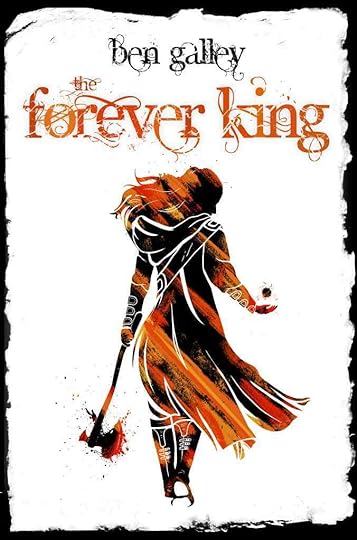 the forever king by ben galley Buy A Copy Here What is it about?
the forever king by ben galley Buy A Copy Here What is it about? Revenge loves company.
Mithrid Fenn wants nothing to do with magick. Magick is a curse word, banned by the vast Arka Empire and punishable by death. Its purging has finally brought peace to war-torn Emaneska. Only a stubborn rebellion, led by the warlord Outlaw King, raids and pillages the empire’s northern fringes.
To cliff-brat Mithrid, this is an age of tranquility and childhood games. That is until an illegal spellbook washes up on her shores, and she finds herself thrust into a war she never knew existed.
Now hunted by daemons and mages, she is dragged inexorably north to Scalussen and its rebels fighting doggedly to preserve a memory of freedom. Mithrid holds no such ideals. She fights for revenge and nothing nobler. If spilling blood means helping the Outlaw King, then so be it. Even if it means all-out war.
Jodie – First of all, I need to point out that every author I’ve read so far in the contest has been extremely talented. Every single one. So, if you happen to be an author whose work was cut this year: please keep writing. If you happen to be a reader following this contest: the list of contestants this year would make a really awesome reading list.
The Forever King… ah, where do I start? This is the beginning of a new series that takes place in the same world as some of author Ben Galley’s previous books. I haven’t read the original series yet, so I was concerned that I would be a little lost. I wasn’t at all! While I am sure that the book will seem even richer to those who have experience in the world, I was still completely immersed in the story.
I was a little unsure about the main character, Mithrid, at first. She is (understandably) distrustful and it took me a while to really get a handle on her. I ended up really enjoying her development, which was completely believable, especially as it didn’t happen in one fell swoop. I am a big fan of characters that develop and grow in a book.
Of course, I have to mention the many races that make an appearance. Dragons!!! Need I say more? The creativity of the races was a joy to read.
One thing that I was slightly less than thrilled about is the appearance of Loki. It seems that he has been popping up pretty much everywhere lately and I have gotten rather tired of that. Oddly enough, his addition actually pulled me out of the narrative a bit, probably because he is so ubiquitous. However, he was used well, so I guess I shouldn’t complain too much.
Aside from the slight quibble, I found The Forever King to be an engrossing read and a promising start to what looks to be an epic series. 8.5/10
Becca – LOVED THIS BOOK! I sat and read through it in one sitting! This is the book that everyone needs to have on their list – and share with their fantasy loving friends as well. Ben Galley does not disappoint with this thrilling tale! 9/10
G.M. – The Forever King is a book that grabs you from the first pages and shakes you so hard that you have no choice but to say “Now THIS is fantasy!”. Several staple fantasy concepts and characters are introduced in the first few chapters and in such a colorful, beautifully written way, that they will hook you instantly. And it’s quite clear that there’s a rich backstory and lore to the world that – while not necessary to deep dive into – just scream at how well put together the whole thing is. There’s a well-thought-out vision for this saga and I am here for it. 9/10
Beth – I loved this book. It pretty much had me in the first chapter and got better from there. The Forever King has a richness of storytelling. It is round, if that makes sense. The characters are rounded out, the background and worldbuilding is detailed enough that I can get a mental picture going, but not so much that my imagination isn’t fully engaged. It is the kind of book that makes me excited and clamoring for more. 9/10
So who is our finalist going to be?
Points totaled, our winner, and the selection as our finalist for team Before We Go Blog is The Forever King.
Congratulations to Ben Galley. Final Score 8.9/10
Check Out SOME OF OUR OTHER REVIEWS If You Liked This - Please Share the Love
October 30, 2021
SPFBO7 Two Semifinalist Cuts – Sword of the Scarred and The Inner Lands – Something Stirs
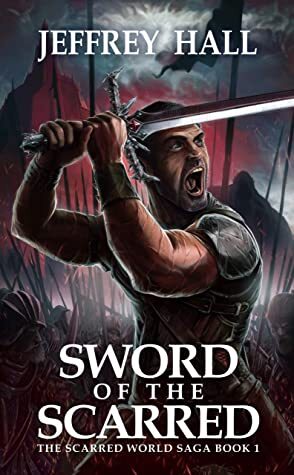 check it out here
check it out here BOOK REVIEW
SWORD OF THE SCARRED by JEFFREY HALL October 30, 2021 10:00 am No Comments Facebook Twitter WordPress What it is about?The price of becoming a legend is more than most are willing to pay.
Requiem Balestone is the last of the Scarred, a group of warriors with tremendous power that when wielded leaves cruel wounds upon their skin. After a lifetime of battling monsters, he’s gathered enough scars to become a ruined version of his former self.
But before he can lay down his blade, one last mission calls him to battle. A mission that pulls him into the middle of a civil war that threatens to destroy the world. And as both sides close in around him, and a mysterious evil begins to stalk the land, Requiem must decide if he’s willing to sacrifice the rest of himself to become the savior of the realm, or walk away from it for good.
G.M – Sword of the Scarred delivers an interesting grimdark premise with interesting worldbuilding. But, unfortunately, by the 20% mark, I can’t say I was compelled to continue. Stakes and a quest are set up for the titular scarred warrior, but given that the person he’s charged himself with protecting is still unconscious, I had a tough time grasping where this would go in the next few chapters. Still, it’s a well-written book and may appeal to dark fantasy fans. 7/10
Jason – I had no idea what to expect from Sword of The Scarred as the author and story were totally new to me
which is one of the great things about this competition. I’ll admit now that I haven’t finished this book, but I did read enough to say I like it. The protagonist Requiem is interesting. He’s wanting to end his long hard life but can’t because he rescues someone and then feels responsible for her. The thing driving the narrative then becomes a desire to get this girl (who he’s dragging around because she’s unconscious) to safety while teasing out the threads of what is going on with her and the new events unfolding in the world. The world-building is well done presenting a rough and difficult setting with lots of dangers lurking around the corner and some back history that begs for further detail and fleshing out. The magic system where a stone gives power to it’s wielder and then puts scars on their body as a reminder of its cost is interesting.
While at times the writing seemed a little overdone (opening battle scene for example) for the most part the prose was balanced and fitting to the scene.
There’s a good balance of action scenes with those that move the story forward. The pacing seemed on point with little reveals here and there to keep my interest.
I think there are many readers who will enjoy Sword of The Scarred and I hope they give it a shot.
I enjoyed my time with it and look forward to more from this series, but it was one I still voted to cut because I enjoyed the book that did become our finalist a little more. Rating: 7 out of 10
Becca – I enjoyed reading through this one, although some of the characters fell a little flat. This had a fabulous premise, and this is one that I think many will enjoy, especially those that love a good military read!
Beth – Sword of the Scarred was my pick as a semi-finalist. I loved the premise of this book. The idea of Requiem and what forces him to act was a very new twist on a fantasy idea. The writing for the most part was clean and crisp, kept the book moving from page to page, it had great battle scenes, and had a dark edge. But the writing was not so dark that it would alienate some readers. It toes the line just enough to show that this world is not a great place for Requiem, but it isn’t extremely grimdark. If you are a fan of darker fantasy then this is a great pick for you. 7.5/10
 check it out here
check it out here BOOK REVIEW
THE INNER LANDS - SOMETHING STIRS by A.J. AUSTIN October 30, 2021 10:00 am No Comments Facebook Twitter WordPress What it is about?For centuries, the mountainous borders of the Inner Lands had kept the monstrous Grinth at bay, and people had finally found peace. But their complacency would be their undoing, for everything was about to change. As their world falls apart around them, an unlikely bond between a young girl, beaten by her father, and a conflicted warrior, haunted by his tragic past, could well seal the fate of all humanity.
As they fight for their survival, a final battle looms. But before they can stand a chance against the Grinth, they’ll first have to conquer their own pasts. Will friendship and strength prevail? Or will the cunning and cruelty of evil twist the world into turmoil? Nothing is certain in the Inner Lands.
When Fallor called a meeting for the entire Hillock village, little did Sill know that it was just the beginning in a series of events that would reshape everything she knew about their small world. The banishing of her abusive father frees her to embark on a journey of her own. One in which she encounters incredible natural wonders like the Moonmirror Peak, mysterious people like Draneth the shaman and his hawk Tamarellin, strange men with stranger eyes; and the mighty Rydan Fort, built into the side of a mountain.
It could have been the adventure of her dreams, were it not for the monstrous creatures that pursue her all the way; bringing death, destruction and tragedy to everything and everyone she grows to cherish. The power she kept a secret for so long is too much for her young mind to handle but she’ll have to learn how to wield it, and quickly, if she’s to survive in this harsh new world.
Dylan – The Inner Lands is primarily the story of two young protagonists with tragic upbringings and experiences who come to understand they have crucial roles to play in a world where the return of a looming threat that has lain dormant for centuries is imminent. The main protagonists, Sill and Kallem are tasked with coming to grips with their own traumatic experiences in order to meet the challenges of the increasingly tumultuous world around them.
The novel immediately drew me in before the story even started with the foreword from AJ Austin about his own personal journey, seeking to draw from his suffering and heartache to channel toward his creative process. He dedicates the book to anyone who has gone through difficulties, hoping that this novel reminds them that they are not alone. It’s a truly poignant foreword that sets the tone for the kind of story he tells.
The book has a psychological and character-driven tilt to it that shines through in its main cast and their internal struggles. Indeed, it feels that the title of the Inner Lands refers not only to the setting but also to the introspective nature and journey of our protagonists. The main character, Sill, is a twelve-year old with a horribly abusive father. Austin depicts her as having retreated into herself making her a thoughtful, introspective child with a vibrant personality hidden beneath an initially demure exterior. Being in her point of view allows us to experience the substantial depth that exists for her beneath the surface.
Kallem is the other main point of view in this book. He is dealing with the ramifications of having witnessed the death of family members. He’s a character that has tried to close himself off to any emotional experience in response to this horrific event. Throughout the story, we get well-acquainted with his personal conflict, as well as the intricacies and nuances to him that underly his gruff exterior. Kallem’s complicated relationship with his mother feels very authentic, and there are dramatic moments between those two that served as highlights to my reading experience.
The worldbuilding has interesting elements and lore through evoking the trope of the looming threat returning to the world. This might appeal to fans of that element of A Song of Ice and Fire by George RR Martin. I enjoyed the pacing at which this part of the story was revealed and unfurled. Aspects of magic, monsters, and mystery grace the Inner Lands in a way that I believe can entertain those who lean toward reading high fantasy and/or epic fantasy.
There were some parts of the book that I could see keeping it from working for everyone. The prose felt somewhat standard to me in the sense that it generally conveyed what was needed to tell the story without particular flourish or too many turns of phrases that stuck out to me. The plot could feel slow at times, especially in the middle of the novel. There were also some occasional spelling errors that took me out of the story. The other area that felt weakest for me was the lack of a well-fleshed-out villain or antagonist. The villains in this book are the Grinth, but they come off seeming like mostly mindless creatures and more a part of the world than characters in themselves. The lack of a fully realized antagonist could feel apropos for the Inner Lands, given that the true enemies for our characters lie within their own personal efforts to reconcile their internal struggles—in this case, the world-threatening enemy serves toward laying the stage to force them to grapple with these preexisting conflicts within themselves. In other words, it’s the inner demons rather than the outer ones that feel the most pertinent for our characters to address, even though the outer ones present an existential threat to the world. As a character-focused reader, I appreciated the internal struggles, while also wishing that they could’ve been brought out for our characters by a more personified enemy.
In all, I enjoyed the Inner Lands to the extent that I’m making it my choice to move on to Before We Go Blog’s next round in SPFBO! I’m excited to see how it fares against the other books our team has chosen for that round.
Eleni – Heavily expositional and meandering. I struggled to go through it. Kept feeling as if something were missing to make some things make sense. The pacing was all over the place 5.5/10
G.M – The Inner Lands has the makings of an epic, sweeping fantasy, with some interesting concepts but ultimately, I did not feel like the narrative made me all too concerned about the stakes. And although the characters do grow and change by the end of the book, I did not feel like the build-up delivered a satisfying finale. I would be interested to see how this gets built upon in the next books. 6/10
Jason – When the list of books were assigned and Team BWGB got The Inner Lands I was excited. I’d already scoped it out as a potential read because I liked the cover and the book blurb. So when Dylan recommended it as a semi-finalist I was even more excited. I read The Inner Lands all the way through and I enjoyed it.
It’s a slow burn of a novel which is something I like if done well. Where I think A.J. Austin succeeded in this area is by making the focus on the two protagonists Sill and Kallem. The narrative is a mix of their inner turmoil reacting to external events. That inner turmoil is driven by the abuse and trauma each has experienced in their short lives and gives the story added weight that requires a slower pace to carry it through to the end.
Speaking of that personal trauma, this story is really about dealing with it, and how one copes with both sudden and extended traumatic experiences. This is probably the element I loved most about the book.
Where it lacked some depth in my opinion is with world-building and a clear antagonist. The story is set entirely in a secluded valley surrounded by mountains that humans have retreated to after almost being annihilated by The Grinth, and the people have forgotten much of their history. We never see anything outside that valley, which is fine if looking for a localized story, but we only get bits and pieces from within it. And though The Grinth are an enemy they are somewhat faceless and leaderless. The true antagonist isn’t revealed until very late in the narrative and then there’s a very quick resolution. The ending felt rushed once the big baddie was revealed. Dylan’s comment that perhaps the villain(s) are the demons in the character’s own heads has some merit to it, but I think the story would have benefited from more depth in the antagonist and world-building areas. Still, I really did enjoy this book. Rating: 6/ 10
Becca – While I enjoyed part of this book, it just failed to deliver the amount of oomph needed to keep me fully engaged.
Check Out some of our other reviewsOctober 29, 2021
SPFBO7 – Review and Semifinalist Cut of Stranger Back Home by E.L Haines
 "STRANGEr BACK HOME MIGHT HAVE A FEW BUMPS IN THE ROAD, BUT IT’S FUN, FUNNY FANTASY" stranger back home by E.L. Haines
"STRANGEr BACK HOME MIGHT HAVE A FEW BUMPS IN THE ROAD, BUT IT’S FUN, FUNNY FANTASY" stranger back home by E.L. Haines 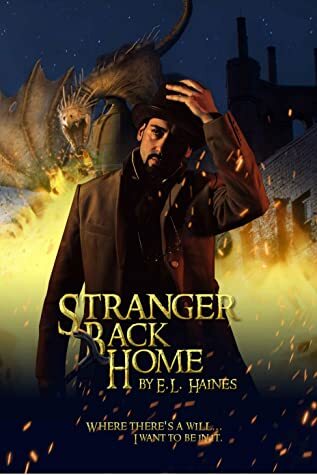 Stranger Back Home by E.l. haines Buy A Copy Here What is it about?
Stranger Back Home by E.l. haines Buy A Copy Here What is it about? One day, your father is a renowned diplomat. The next day, he’s an infamous terrorist.
When Sparrow is summoned to the reading of his father’s last will and testament, the most he hoped for was a minor bequest. Instead, he inherited suspicion and accusations from the Empire that his father helped unite.
Locked away in a vault are the secrets that will reveal Xavier DuMont’s mysterious past and shine a light on Sparrow’s future. Perhaps even the future of the entire realm.
Of course, these secrets won’t be obtained easily. Especially when everyone in this magical world seems so casually racist.
Social dynamics in this world were already pretty strange. Somehow, Sparrow makes everything stranger.
Stranger Back Home by E.L. Haines is a comedic fantasy that follows a dwarf by the name of Sparrow on his continuing adventures as he returns to his fantastical homeworld following the death of his father.
Technically, Stranger Back Home is part of a series of novels about Sparrow, but works well enough as a standalone, since most of his real backstory is fleshed out here. There were occasional references to earlier books, but nothing too jarring to take me out of the moment or narrative.
And what a narrative it is. Sparrow is a well accomplished entrepreneur in the fantastical city of Dragonsmouth – filled to the brim with ghosts, vampires, goblins, dwarfs, and kobolds – and he’s got a lot of plates spinning at once.
Those plates include managing an all-girl rock band, dealing with the annoyances of the stage actors guild, managing his estate that he stole off some vampires, managing the power struggle between the various ruling groups in Dragonsmouth, leading a small group of mercenaries, and struggling to educate the fantasy populace on the injustices of blackface while simultaneously running a kobold day spa in kobold-face. And that’s just off the top of my head.
If you think that’s a lot, you’d be right. There’s a sort of loose feeling to the narrative that keeps Sparrow bouncing around, ping-ponging between different things that all ultimately tie back into the overarching plot of him being summoned due to his father’s death and his step-mother’s kidnapping.
Does it work seamlessly? Not always. Some threads seem more consequential than others while others only have the most tenuous of links to the main story.
But is it fun? You bet it is. There’s a lot of wild fantasy concepts thrown around in a bizarre mishmash that becomes a thing of beauty. The language is crisp and tight and has occasional glimmers of Pratchett (who, as everyone knows, is the only author to ever write humorous fantasy). When Haines ventures into social commentary, things get a bit clumsy, and I’m not sure some of his theses fully lands as the book believes it should, but it is a valiant attempt at best and the rest of the book is so enjoyable that it’s not that big a deal (to me, at least).
But how does Stranger stack up in terms of SPFBO?
The thing about humor is that it doesn’t tend to fare well in these sorts of competitions (yeah, yeah Orconomics), because judges either don’t like the jokes (humor is subjective), or they feel the humor takes away from the narrative, or they don’t think direct humor belongs in books of this nature. All are valid opinions. I, personally, have written copious amounts of humorous sci-fi/fantasy fiction and have encountered these views (and reviews) often. But this isn’t an advertisement for my books*. The point is that as an SPFBO judge, I’m now in a position to be the change I want to see in the world.
Strange Back Home might have a few bumps in the road, but it’s fun, funny fantasy, that I enjoyed reading and I’m giving it the push forward.
*This, on the other hand, is! Read the Duckett & Dyer: Dicks For Hire series today!
Other Team Member ReviewsEleni – “An entertaining satire with an interesting and snarky narrator. The repetitive directing of the readers attention to the protagonist being a dwarf made for a bumpy start though cause it went past establishing the looks and into noticeable repetition. Some of the spell names/words being side jokes to real world memes (while amusing) did break me out of the book’s narrative multiple times as well.” 6.5/10
Ganesh – “Stranger Back Home is a comedic fantasy that follows a dwarf by the name of Sparrow as he returns to his fantastical homeworld following the death of his father. It spins a complex tale chock-full of ghosts, vampires, goblins, dwarfs, kobolds, and all-girl rock bands, and it does so in a very fresh and inventive way. The book has a lot of balls in the air and, as a result, hits a few bumps in the road. But at the end of the day, it’s a fun, deft, funny fantasy that I really had a good time with.” 9/10
Beth – “I love pretty much any book with a satire angle, darkly funny, or just straight-up comedy. Humour is often an extension of a ridiculous scenario; fantasy is also an extension of what could be if the imagination runs wild—pairing humor with fantasy work well together more than any other genre, in my opinion.
Humor is also super subjective, however, which G.M. covered very well in his original review. Humor doesn’t usually tend to do well in SPFBO because we are all such varied reviewers. I like my humor a bit dry and dark—some like slapstick, others like prat Three Stooges type comedy. It is hard to get a consensus on what is funny. All that being said, Stranger Back Home was generally really funny. It even appealed to me who likes their humor a lot darker. I laughed a lot. I liked bouncing around from situation to situation. It is a great narrative, and Sparrow is a likable character. I have not fully finished this book, but I know I will. It is too funny not to.” 7/10
Jason – “Stranger Back Home was something of a mixed bag. On one hand I love to see a humorous book make it to the semis. Humor is pretty underrated in terms of sub-genres within #SPFBO and it’s good to see some additional representation.
G.M. Nair’s review was on point in my opinion. It was fair and hit on many of the positives and negatives I experienced while reading. The premise was fun and interesting. But for me the book fell a little flat. I don’t know if that is due to me and my tastes or something else. Though the book can be read as a stand-alone it is part of a larger series and there were many repeated references to events that had gone on before that made me feel like I was missing out on something. I felt in order to really appreciate the book I needed to have read the others. While at times I found myself laughing at the humor it began to feel very repetitive. One prominent example was the attempt to address issues of racism done through a humorous lens that didn’t really succeed in my view.
I set the book down at about the 45% mark and decided it wasn’t really for me. While some of the concepts had me curious I was thrown out of the narrative by feeling I was missing out on previous installments, and because the humor (a very subjective thing) felt a little too forced.” 5/10
In the end, we decided to cut this title. It is at a point now that we have a plethora of great titles to choose from, and this is where this contest gets super hard for us reviewers. This is a great story, and should certainly be read, especially if you enjoy comedy. You can’t go wrong with this.
Check Out SOME OF OUR OTHER REVIEWS#SPFBO Review and Cut – The Deathless One by Niranjan K.
#SPFBO Review and Cut – The Hand of Fire by Roland O’Leary
If You Liked This - Please Share the Love Adrian Collins
Adrian Collins runs Grimdark Magazine and loves anything to do with telling darker stories. Doesn’t matter the format, or when it was published or produced–just give him a grim story told in a dark world by a morally grey protagonist and this bloke’s in his happy place. Add in a barrel aged stout to sip on after a cheeky body surf under the Australian sun, and that’s his heaven.
October 28, 2021
SPFBO7 Review and Cut – To the North by Evan L. Grove
 "Evan Grove has developed a complex world, and one that will be enjoyed by many for ages to come." TO THE NORTH by Evan L. Grove
"Evan Grove has developed a complex world, and one that will be enjoyed by many for ages to come." TO THE NORTH by Evan L. Grove 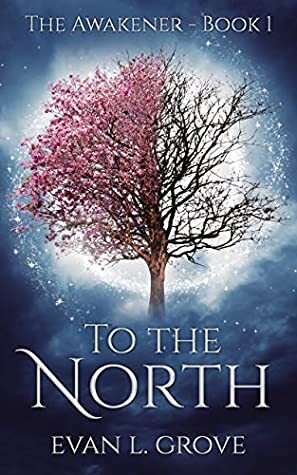 TO THE NORTH by Evan L. Grove Buy A Copy Here What is it about?
TO THE NORTH by Evan L. Grove Buy A Copy Here What is it about? Emily Lee wants nothing more than to live her life in peace, safe in the comfort of home with her father. But when he falls prey to dark magic, trapping him and countless others in a foreign land, she is forced to take action. Compelled only by the desire to save him, Emily travels to the northern nation of Odelia in search of a means to free her father from his terrible curse.
Lehksi Olent works as a private investigator, helping those uncover the truth that is often shrouded by a world of magic and mystery. Together with her brother, Marty, she now travels the Odelian countryside in pursuit of the growing unrest taking place within the heart of a country torn asunder by unseen forces.
When their paths converge, Emily and Lehksi’s lives will be forever changed. Two paths, one future. Be it for the good of all, or for a singular desire, the fate of Odelia lies within their choices. And should they prove lacking, the world of Oul might never be the same.
To the North is the first novel in The Awakener Duology, an adult urban fantasy that explores what it means to discover the dark truths of an unforgiving land. It takes place in an alternate reality set in a pre-digital world, one that is governed by magic and corporate influence. Two young women must navigate numerous challenges in order to protect what is important to them, but in doing so they will make discoveries that may drive a wedge between them
I can promise that this is one book that is not going to leave you bored – once you get past the first little bit. This book has a bit of a slow start, but once you get past all the setup and layout, then it picks up and keeps you engaged throughout.
The first part took me about a week to work through, but the last pieces took hours. The characters work well and compliment each other, and the storyline, while fantasy, is not so drawn out that you can’t watch it play out in your head.
This was one of those books that is very enjoyable, very little lag, and a storyline that keeps you engaged throughout.
When it came to scoring this book, it was hard to put it down on paper. I truly enjoyed reading the majority of this book, but it was one of those that I didn’t feel would stand up to some of the giants that are in the running. I do think that this is one book that should be read – and enjoyed! I look forward to seeing the second installment, and how this world moves forward.
The author, Evan Grove has developed a complex world, and one that will be enjoyed by many for ages to come.
Check Out SOME OF OUR OTHER REVIEWS#SPFBO Review and Cut – The Deathless One by Niranjan K.
#SPFBO Review and Cut – The Hand of Fire by Roland O’Leary
If You Liked This - Please Share the Love Rebecca Hill
Hello! I am Becca, and you can find me at http://ataleoftwopages.blog or
@duchessofreadin on Twitter! I am a mom of two boys and have been married to my husband for almost 15 years. I am a hopeless book addict, and you can usually find me with at least 3 books on the go. In addition to reading, I teach college history courses, work in DC as a Communications Analyst, and also work in social media management and book editing! I also enjoy some crafting, so if I am not physically reading a book, I am listening to one while I relax with a project. I stay happily busy!SPFBO7 Review and Cut – Journal of Resurrection: Fantasy Fiction Coming of Age Epic Narrative by WJ Donovan
 Journal of Resurrection: Fantasy Fiction Coming of Age Epic Narrative by WJ Donovan
Journal of Resurrection: Fantasy Fiction Coming of Age Epic Narrative by WJ Donovan 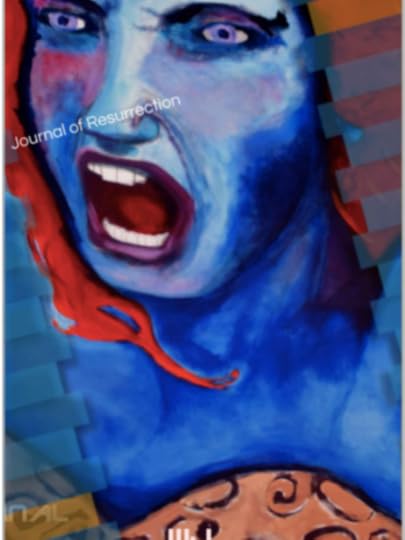 Journal of Resurrection: Fantasy Fiction Coming of Age Epic Narrative by WJ Donovan Buy A Copy Here What is it about?
Journal of Resurrection: Fantasy Fiction Coming of Age Epic Narrative by WJ Donovan Buy A Copy Here What is it about? Durstan Aldrich must overcome his own sense of self identity and become a leader, even though sometimes he wishes he could go back to fixing cabinets. In a world not that different to our own Durstan begins to discover magic and women. Next he must survive war and find a way to bring back the dead to save his city and his friends. Only the Journal of Resurrection can pave the road to victory and survival.
Beth's ReviewJournal of Resurrection: Fantasy Fiction Coming of Age Epic Narrative by WJ Donovan was a challenging book for me to tackle. From the blurb, “Durstan Aldrich must overcome his own sense of self-identity and become a leader, even though sometimes he wishes he could go back to fixing cabinets.” Your protagonist’s sense of self is what your readers first learn about your character; it is how they feel for them and who they will be in the narrative. This is asking a lot of any fantasy novel part of a series, let alone a single book.
The blurb further goes on to talk a bit about the adventures that are awaiting our cabinet maker protagonist, Durstan Aldrich. “In a world not that different to our own Durstan begins to discover magic and women. Next he must survive war and find a way to bring back the dead to save his city and his friends. Only the Journal of Resurrection can pave the road to victory and survival.” I am sad to say that I did not make it that far in reading this, and it was an early DNF for me. It had utterly to do with grammatical, editing, and structural editors. And because of these errors, I never could get a sense of what was going on. I was too distracted by the odd line spacing, pages with no paragraph breaks, and read in an almost Joyce-ian stream of consciousness type style.
The author does have a way with description, and I think that this story will be engaging with some editing. But that is hard to say at this juncture. So I had to give Journal of Resurrection: Fantasy Fiction Coming of Age Epic Narrative a pass.
Check Out SOME OF OUR OTHER REVIEWS
#SPFBO Review and Cut – The Deathless One by Niranjan K.
#SPFBO Review and Cut – The Hand of Fire by Roland O’Leary
If You Liked This - Please Share the Love Beth Tabler
Elizabeth Tabler runs Beforewegoblog and is constantly immersed in fantasy stories. She was at one time an architect but divides her time now between her family in Portland, Oregon, and as many book worlds as she can get her hands on. She is also a huge fan of Self Published fantasy and is on Team Qwillery as a judge for SPFBO5. You will find her with a coffee in one hand and her iPad in the other. Find her on: Goodreads / Instagram / Pinterest / Twitter



